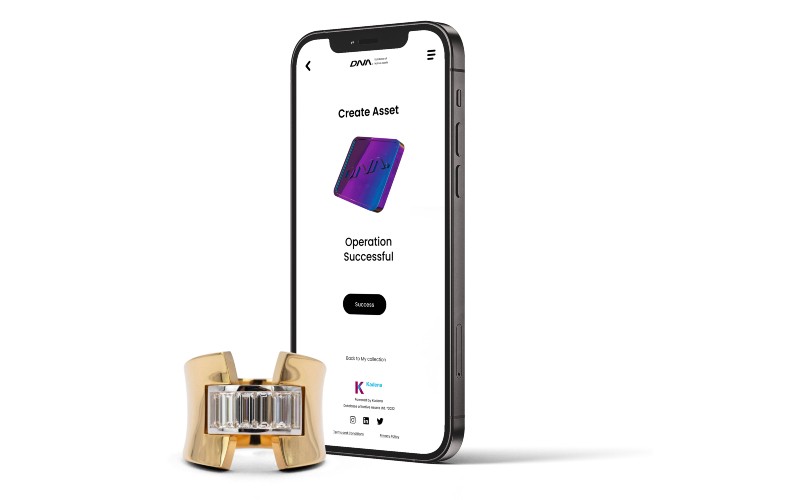A new blockchain-powered technology that protects ownership and tackles the growing blight of counterfeiting has been quickly adopted by businesses keen to protect themselves and their customers.
UK-based DNA – Database of Native Assets – officially launches its tech solution this week.
It claims to create unique digital passports which prove authenticity and ownership of jewellery, collectibles, art, rarities and luxury goods. This information is then safeguarded on the Kadena blockchain platform.
DNA is said to be built for mass adoption and users of all skill sets as a plug & play solution that facilitates a brand’s transition into Web3 without the need for complicated blockchain infrastructure.
This week Sotheby’s announced the sale of a highly valuable Paraiba Tourmaline ring from Austrian jeweller Schullin which was verified with a DNA Native Asset.
The handmade platinum ring features a 49,88ct natural oval-cut Paraiba Tourmaline and 60 baguette-cut diamonds and is worth between £140,000-£180,000.
“We’re very impressed by what DNA has created and the solution they offer – it made sense to use the technology for the upcoming Sotheby’s sale, which features a unique piece,” said Lukas Schullin, manager at Schullin Wien.
“We’ve explored a number of digital verification solutions in the past but none work as effectively and seamlessly as this one.
“For us, simplicity and ease of use is what sets it apart. The fact it can be used by anyone makes it the perfect solution for all of our customers including those who may not be particularly tech savvy.
“It offers the power and security of the blockchain without all the headache of having crypto currency and a digital wallet.”
DNA co-founder and CTO Abraham Milano said: “The challenge and objective of DNA is to harness the power and possibilities of the blockchain for practical real world uses in a way that is accessible to all.
“There is a certain anonymity about products on the web which makes fraud and counterfeiting rampant. Our mission is to fix that so that brands, creatives and their customers are protected.
“There are many exciting things that can be built upon this technology that will improve the way brands interact with their customers and how they set up a more responsible circular economy.”
